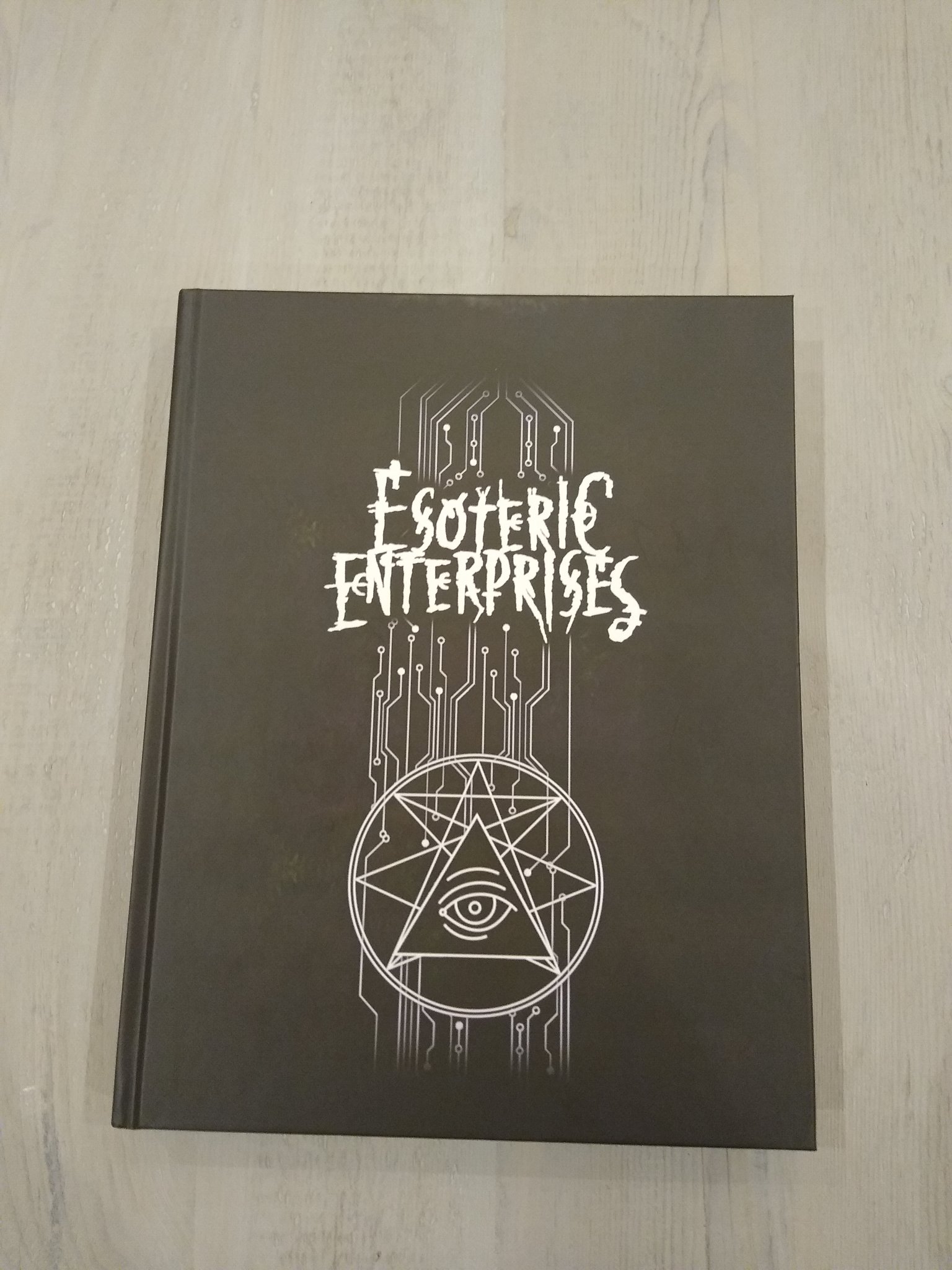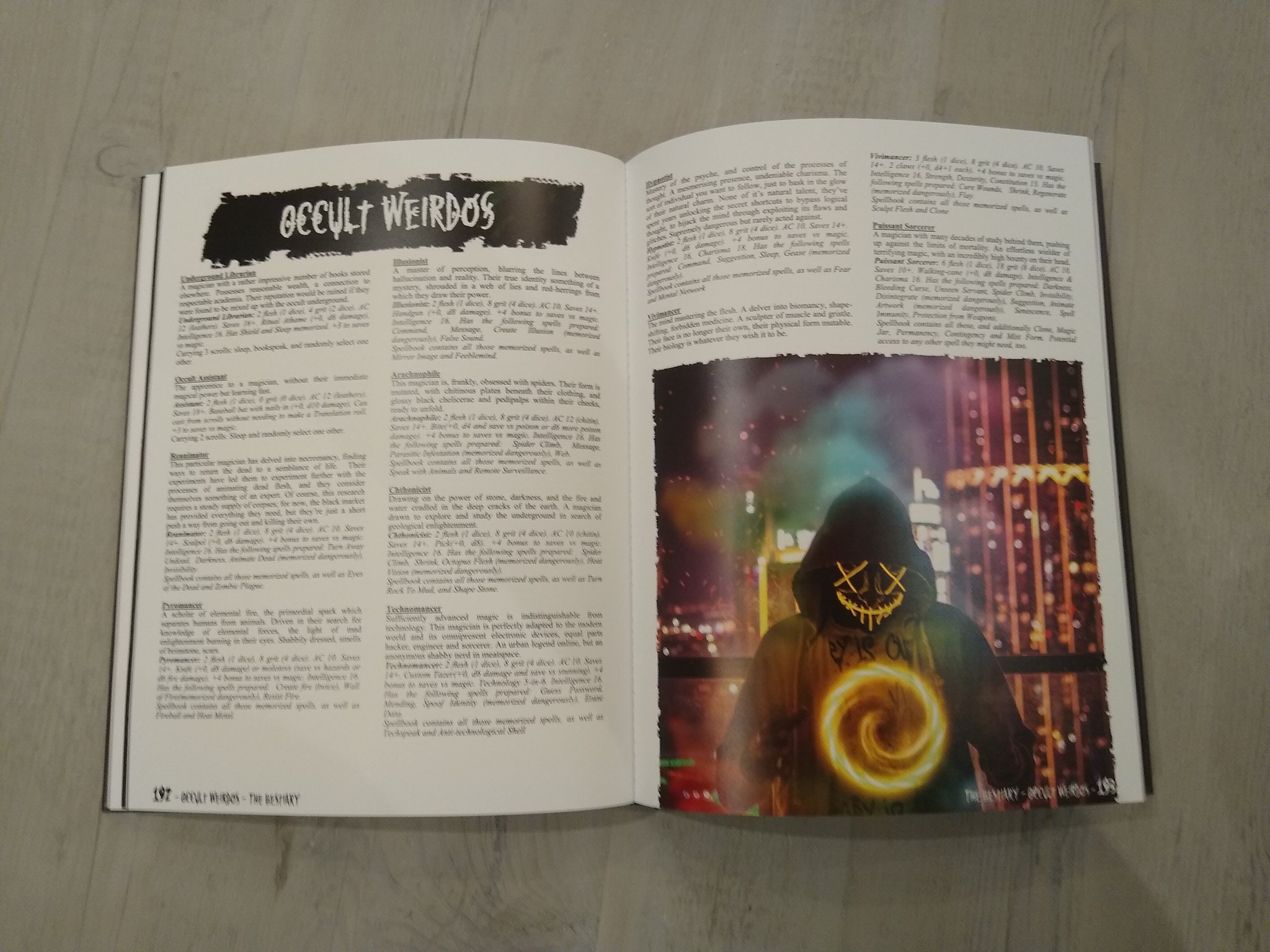Strategies
Glimpsed Shadows
Hrud Tactic
Use this Tactic at the beginning of the first battle
round. Pick a model from your kill team and set it
up again, anywhere in your deployment zone.
2 CP
Warp Space
Hrud Tactic
Use this Tactic after a model from your kill team
shoots in the Shooting phase. The model can
immediately make a normal move of up to 7" as if
it were the Movement phase.
1 CP
Slippery Blighter
Hrud Tactic
Use this Tactic after a model from your kill team
Falls Back. That model can still shoot this battle
round.
1 CP
Entropic Bait
Hrud Tactic
Use this Tactic at the start of the Shooting phase. Pick a model from your kill team that is within 2"
of a HRUD WARRIOR model. Until the end of the phase, while that Hrud Warrior model is on the battlefield, any
attacks which target the chosen model are resolved
against that Hrud Warrior model instead.
2 CP
Distortion Field
Hrud Tactic
Use this Tactic in the Movement phase. Pick a
model from your kill team that has not yet moved. That model may not move this phase, but for the
rest of the battle round, if this model is obscured, shooting attacks that target this model suffer an
additional -1 modifier to their hit rolls.
1 CP
Toxic Smog
Hrud Tactic
Use this Tactic at the start of the Fight phase. Pick
an enemy model that is within 1" of any of your
HRUD POISONER models and roll a D6. On a 4+, that enemy model
suffers 1 mortal wound.
2 CP
Distortion Tunnels
Hrud Tactic
Use this Tactic at the end of the Movement phase.
Choose up to three HRUD models from
your kill team that were set up in Reserve and set
them up anywhere on the battlefield that is more
than 5" away from any enemy models.
1 CP
Units
Hrud Warriors
Hrud Warrior: Movement 6", WS 5+, BS 4+, Strength 2, Toughness 2, 1 Wound, 1 Attack, Leadership 4, 6+ Save, no max.
Hrud Warrior Gunner: Movement 6", WS 5+, BS 4+, Strength 2, Toughness 2, 1 Wound, 1 Attack, Leadership 4, 6+ Save, 2 max.
Hrud Elder: Movement 6", WS 5+, BS 4+, Strength 2, Toughness 2, 1 Wound, 2 Attacks, Leadership 5, 6+ Save, 1 max.
Equipment: Scavenged Small-arm.
Options:
This model may replaces its Scavenged Small-arm with a Scavenged Long-arm, a Scavenged Shotgun, or a Marksman's Rifle.
A Hrud Warrior Gunner may replace its Scavenged Small-arm with a Flamethrower, a Scavenged Machine-gun, a Rocket Launcher or a Hrud Warp Fusil.
A Hrud Elder may have a Poison Blade.
Special Rules:
Squirmy Anatomy:
This model can climb any distance vertically (up or down) when it
makes a normal move – do not measure the distance
moved in this way.
Shadow Field:
When an opponent makes a hit roll for
a shooting attack that targets this model, and this model is obscured, that hit roll
suffers an additional -1 modifier.
Specialists: Leader (Elder only), Heavy, Coms, Scout, Sniper,
Faction Keyword: Hrud
Keywords: Infantry, Hrud Warrior
Hrud Poisoners
Hrud Poisoner: Movement 6", WS 5+, BS 4+, Strength 2, Toughness 2, 1 Wound, 1 Attack, Leadership 4, 6+ Save, no max.
Hrud Poisoner Fighter: Movement 6", WS 5+, BS 4+, Strength 2, Toughness 2, 1 Wound, 1 Attack, Leadership 4, 6+ Save, 1 max.
Hrud Chemist: Movement 6", WS 5+, BS 4+, Strength 2, Toughness 2, 1 Wound, 2 Attacks, Leadership 5, 6+ Save, 1 max.
Equipment: Scavenged Small-arm.
Options:
This model may replaces its Scavenged Small-arm with a Poisoned Blade, a Scavenged Shotgun, or a Chainsaw.
A Hrud Poisoner Chemist or Fighter may have a Smog-generator.
A Hrud Poisoner Chemist may have a Poisoned Blade or a Chainsaw.
Special Rules:
Squirmy Anatomy:
This modelcan climb any distance vertically (up or down) when it makes a normal move – do not measure the distance moved in this way.
Shadow Field:
When an opponent makes a hit roll for a shooting attack that targets this model, and this model is obscured, that hit roll suffers an additional -1 modifier.
Smog-generator:
Subtract 1 from the Leadership characteristic of enemy models within 6" of any models equipped
with a Smog Generator
Specialists: Leader (Chemist only), Coms, Scout, Combat, Medic
Faction Keyword: Hrud
Keywords: Infantry, Hrud Poisoner
Hrud Scavengers
Hrud Scavenger: Movement 7", WS 4+, BS 4+, Strength 3, Toughness 3, 1 Wound, 1 Attack, Leadership 5, 6+ Save, no max.
Hrud Scavenger Gunner: Movement 7", WS 4+, BS 4+, Strength 3, Toughness 3, 1 Wound, 1 Attack, Leadership 5, 6+ Save, 1 max.
Hrud Saboteur: Movement 7", WS 4+, BS 4+, Strength 3, Toughness 3, 1 Wound, 2 Attacks, Leadership 6, 6+ Save, 1 max.
Equipment: Scavenged Long-arm.
Options:
This model may replaces its Scavenged Long-arm with a Marksman's Rifle.
A Hrud Scavenger Gunner may replace its Scavenged Long-arm with a Flamethrower, a Scavenged Machine-gun, a Rocket Launcher, a Hrud Warp Fusil or a Hrud Warp Bombard.
A Hrud Saboteur may have a Poisoned Blade, or replace its Scavenged Long-arm with a Scavenged Shotgun.
Special Rules:
Squirmy Anatomy:
This modelcan climb any distance vertically (up or down) when it makes a normal move – do not measure the distance moved in this way.
Shadow Field:
When an opponent makes a hit roll for a shooting attack that targets this model, and this model is obscured, that hit roll suffers an additional -1 modifier.
Spotter:
At the start of each Shooting phase, you can
choose another HRUD model within 3" of a Hrud Scavenger that is not shaken.
That model does not suffer penalties to their hit or
injury rolls due to their target being obscured.
Specialists: Leader (Saboteur only), Coms, Scout, Heavy, Sniper, Demolitions, Veteran
Faction Keyword: Hrud
Keywords: Infantry, Hrud Scavenger
Gear
Ranged Weapons
Flamethrower: Range 8", Assault d6, Strength 4, AP 0, Damage 1,
This weapon hits automatically.
Marksman's Rifle: Range 36", Heavy 1, Strength 4, AP 0, Damage 1,
A model firing a sniper rifle does not suffer the penalty to hit
rolls for the target being at long range. If you roll a wound roll
of 6+ for this weapon, it inflicts a mortal wound in addition to
its normal damage.
Hrud Warp Bombard: Range 30", Heavy 4, Strength 5, AP 0, Damage 1,
This weapon can be fired at models that are not visible to
the bearer. If the target is not visible to the bearer, a 6 is
required for a successful hit roll, irrespective of the firing
model’s Ballistic Skill or any modifiers.
Hrud Warp Fusil: Range 30", Heavy 1, Strength 8, AP -4, Damage d6,
This weapon can be fired at models that are not visible to the bearer. If the target is not visible to the bearer, a 6 is required for a successful hit roll, irrespective of the firing model’s Ballistic Skill or any modifiers.
Rocket Launcher: Range 24", Pistol 1, Strength 8, AP -2, Damage 3, No special rules.
Scavenged Machine-gun: Range 36", Heavy 3, Strength 4, AP 0, Damage 1,
No special rules.
Scavenged Long-arm: Range 24", Rapid Fire 1, Strength 3, AP -, Damage 1,
No special rules.
Scavenged Shotgun: Range 12", Assault 2, Strength 3, AP 0, Damage 1,
If the target is within half range, add 1 to this weapon's strength.
Scavenged Small-arm: Range 12", Pistol 1, Strength 3, AP 0, Damage 1,
No special rules.
Melee Weapons
Chainsaw: Melee, Strength As User, AP 0, Damage 1,
When a model attacks with this weapon, it can make a single additional attack.
Poison Blade: Melee, Strength n/a, AP -2, Damage 1,
This weapon wounds on a 4+.
Points Costs
Ranged Weapons:
Flamethrower 2 Pts
Hrud Warp Bombard 5 Pts
Hrud Warp Fusil 4 Pts
Marksman's Rifle 1 Pt
Rocket Launcher 3 Pts
Scavenged Machine-gun 1 Pt
Scavenged Long-arm 0 Pts
Scavenged Shotgun 0 Pts
Scavenged Small-arm 0 Pts
Melee Weapons:
Chainsaw 0 Pts
Poison Blade 2 Pts
Other Equipment:
Smog-generator 3 Pts
Models:
Hrud Warrior 7 Pts
-Hrud Warrior Gunner 7 Pts
-Hrud Elder 7 Pts
Hrud Poisoner 6 Pts
-Hrud Poisoner Fighter 6 Pts
-Hrud Chemist 7 Pts
Hrud Scavenger 7 Pts
-Hrud Scavenger Gunner 7 Pts
-Hrud Saboteur 8 Pts




